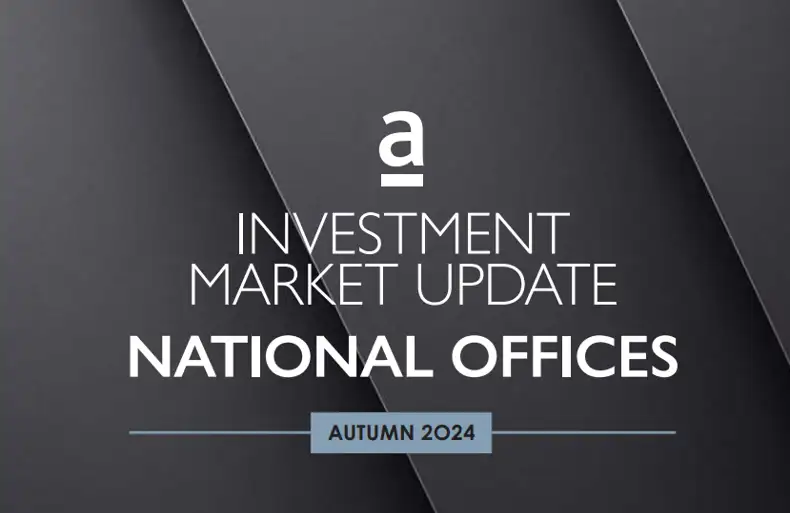Blog | Investment | Industrial
Shedmania reigns… but it’s not all about Logistics

The resilience of the multi-let sector has been proved over the last 18 months, stirring investor appetite for this sub sector.
Logistics has undoubtedly become the trophy asset throughout the pandemic, stealing the limelight from its contemporaries within the industrial sector. For the multi-let sector, 2020 and H1 2021 the focus was on damage limitation, although it demonstrated remarkable resilience on rent collection, rental growth and low tenant defaults. With the storm largely weathered, H2 this year is set to see a resurgence of multi-let investments on the market. Furthermore, with demand showing little sign of abating for ‘traditional industrial uses’, smaller units on well-located urban industrial estates are seeing new uses emerge, adding to the competition for inner city space; the rise of the dark kitchen. Last year, nearly 80% of industrial volume traded was in the logistics and big box sector. With £7.3Bn already traded in the first half of the year, 2021 is set to be another record breaking year. In contrast, last year saw volume in the multi-let sector sink to a record low of £1.4Bn, far removed from the £4.8Bn seen only two years previously in 2018.
The contrastingly subdued year for multi-lets reflected both the greater perceived risks around the smaller end of the market and weaker demand from domestic investors. With lockdowns and Covid restrictions imposed, the fact that logistics continued to operate highlighted its qualities to investors. The multi-lets however, were impacted by the inability of investors to inspect properties and were more likely to be closed for business than their big box counterparts.
How did the multi-let sector remain so resilient?
The immediate disruption of Covid to multi-let industrial was significant, affecting around 40% of occupied floorspace. The impact was greatest felt by the occupiers in the smaller units who were more likely to be start-up / SME tenants and who due to the nature of their business were more exposed to the restrictions imposed. For the owners of multi-let industrial portfolios this led to unprecedented challenges engaging with occupiers, questioning not only whether they could use their space, but whether their business might survive. Landlords offered payment support programmes through rent deferrals, rent free periods and change of payment frequency. The speed of implementation of such solutions helped support rent collection during the year and even unleashed a new wave of demand from businesses repositioning their operations to support a new way of working by selling more goods online.
Multi-let owners have reported an improved trend in rent collections for each invoicing period since the outbreak of the pandemic. Stenprop, a leading multi-let industrial company, has continued to see a rise in rental income and occupancy across its portfolio for the six months to the end of June 2021. In its latest trading update the group said its passing rent saw a boost of 8% over 12 months, whilst its occupancy rate increased by another 1% in the last quarter to 95% as at 30 June, up from 91% at the beginning of the first Covid lockdown in March 2020. Similar figures were echoed by Mileway and IPIF, both of who have seen rent collection trending at c.90% over the last 12 months. All things considered, a very positive outcome.
The decrease in multi-let transaction volume has largely fallen in the regions outside the wider south east. However, whilst volume is still significantly down, London, on the other hand is currently experiencing an unprecedented pricing boom. It started with Segro buying Electra Park in Canning Town for £133M last October with a yield of 2.58%. In June, Mirastar dug deep to buy an industrial estate in Hayes for more than £65M for a yield of below 3.5%; Capital Industrial then bought a £75M, four-asset London portfolio at a net initial yield of around 2.7%, and most recently Goodman secured Mowlem Trading Estate, Tottenham for £130m, reflecting 2.54%.

The growth of new occupier markets
In the middle of every difficulty lies opportunity and therein lies the phenomenal success of dark kitchens emerging as a new growth occupier on many local industrial estates. Following the closure of restaurants, food operators rushed to adapt their operations using industrial estates as their new centre for operations. A dark kitchen is used for meal preparation; customers order their favourite food via an app from the likes of Wagamama, which prompts the kitchen to prepare the order from industrial units fitted out for food services.
Urban multi-let industrial estates are attractive places to operate dark kitchens due to their close proximity to their consumers, allowing a quick delivery service. One sector’s loss is another’s gain and we anticipate that core urban industrial estates in regional cities, such as Manchester and Birmingham, will also experience a rapid rise in demand going forward. The divergence in transactions between logistics and multi-let started with the lockdown in March 2019 and was exacerbated by the perceived risks associated with a smaller market, more diverse occupier base and therefore more exposure to the fallout of Covid restrictions.
Now that the multi-let sector has demonstrated its resilience and with the role out of vaccinations and the reopening of the economy, there is a light at the end of the tunnel. Investor appetite, particularly from domestic institutions is likely to stir, in fact, multi-let is expected to edge ahead of distribution warehouses by 2023 as a result of its severely restricted supply.

A graduate's insight into the 2024 Alternative Market
In the dynamic world of real estate investment, the alternative sector continues to carve out its unique niche, offering a di...

Why high net worth individuals continue to be attracted to the UK Real Estate?
Despite some challenging financial circumstances in the UK, the country’s real estate sector continues to attract investment ...

Commercial Investment National Industrial Market Update
Industrial / logistics remains the dominant sector across all commercial markets, a trend we expect to continue through 2024 ...

Commercial Investment National Office Market Update
Allsop sees this as an opportune moment to enter the market before further base rate reductions potentially drive-up competit...